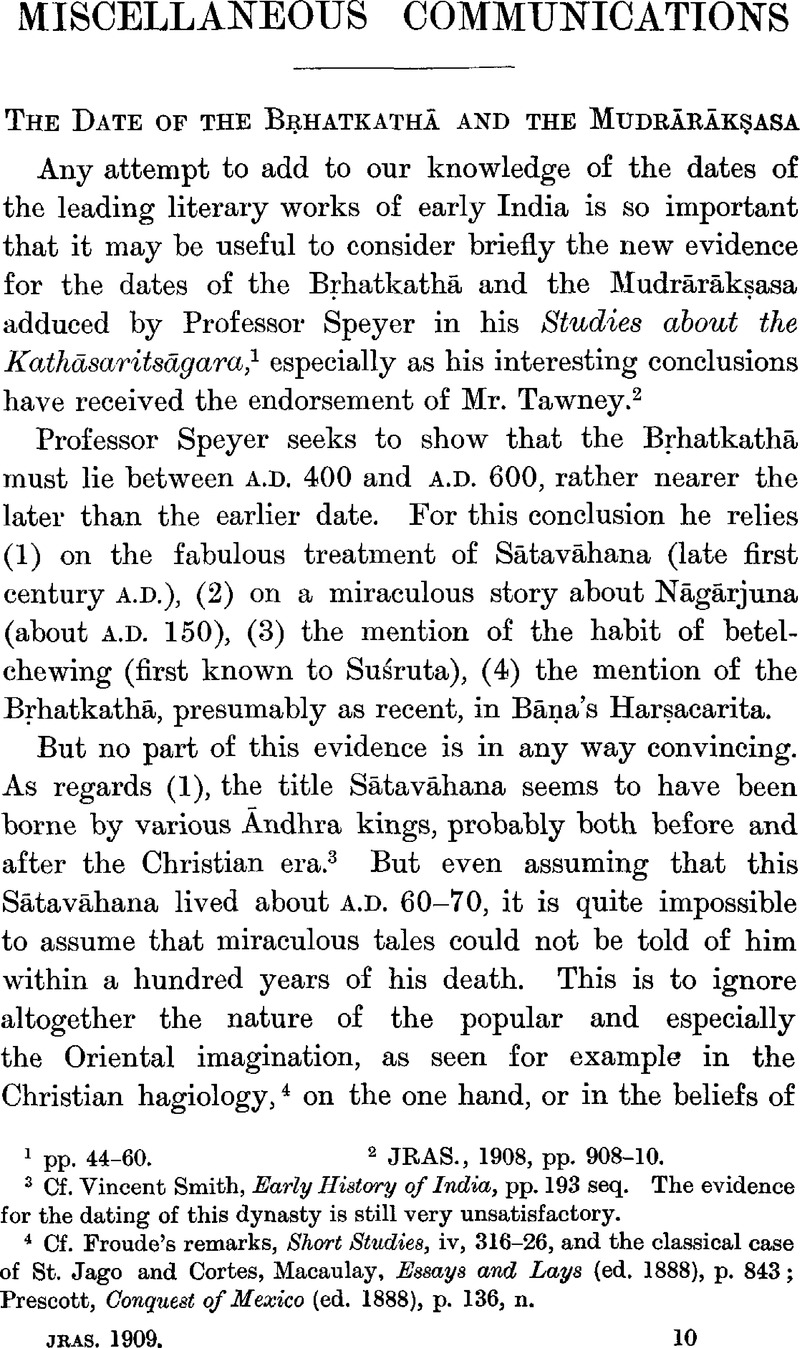No CrossRef data available.
Published online by Cambridge University Press: 15 March 2011

page 145 note 1 pp. 44–60.
page 145 note 2 JRAS., 1908, pp. 908–10.Google Scholar
page 145 note 3 Cf. Smith, Vincent, Early History of India, pp. 193Google Scholar seq. The evidence for the dating of this dynasty is still very unsatisfactory.
page 145 note 4 Cf. Froude's, remarks, Short Studies, iv, 316–26,Google Scholar and the classical case of St. Jago, and Cortes, , Macaulay, , Essays and Lays (ed. 1888), p. 843;Google ScholarPrescott, , Conquest of Mexico (ed. 1888), p. 136,Google Scholar n.
page 146 note 1 See Frazer, , Early History of the Kingship.Google Scholar
page 146 note 2 See JRAS., 1906, pp. 979 seq.Google Scholar
page 146 note 3 Osteology, pp. 5Google Scholar seq.
page 146 note 4 ZDMG., 1908, pp. 135Google Scholar seq.
page 146 note 5 Report, 1882–1883, App. ii, p. 109.Google Scholar
page 146 note 6 Cf. Smith, Vincent, op. cit., p. 288,Google Scholar n.; my note, JRAS., 1908, p. 575.Google Scholar
page 146 note 7 Op. cit., p. 107.Google Scholar
page 147 note 1 p. 50.
page 147 note 2 ZDMG., lxvi, 660;Google ScholarEarly History of India, p. 196, n. 2.Google Scholar
page 147 note 3 pp. 54–6.
page 147 note 4 Cf. my note, JRAS., 1907, p. 681.Google Scholar The word does not help to fix a later date, as it was in use e.g. in the fifth century, Fleet, , JRAS., 1906, p. 891.Google Scholar
page 147 note 5 Théâtre, indien, p. 317;Google ScholarLe Népal, ii, 63.Google Scholar
page 148 note 1 ProfessorSpeyer, , p. 54,Google Scholar points out that the Bṛhatkathā can hardly have been the source of the Mudrārākṣasa. This point cannot be proved, as the mere silence of two epitomes is inconclusive (cf. Hopkins, , Great Epic of India, p. 398Google Scholar), but it is certain that Viśākhadatta did not invent the tale, though I do not believe that it undoubtedly represents a historical tradition (Vincent Smith, op. cit., p. 118, n.).
page 148 note 2 Tyrrell, , Latin Poetry, pp. 173Google Scholar seq.
page 149 note 1 p. 55.
page 149 note 2 Hillebrandt, , ZDMG., xxxix, 130–2Google Scholar (not cited by Speyer).
page 149 note 3 Jacobi, , Vienna Or. Journ., ii, 212–16;Google Scholar cf. Oldenberg, , Die Lit. des alten Indien, p. 282;Google ScholarSchroeder, v., Ind. Lit. u. Cult., pp. 655Google Scholar seq.; Henry, , Les Litt. de l'Inde, p. 281.Google Scholar